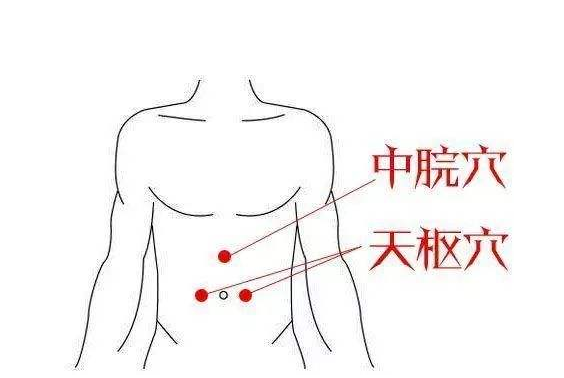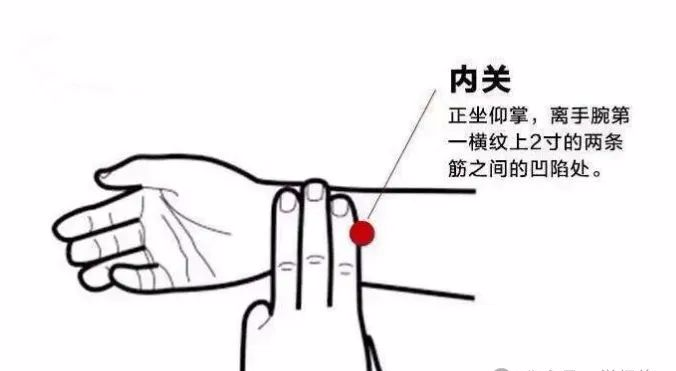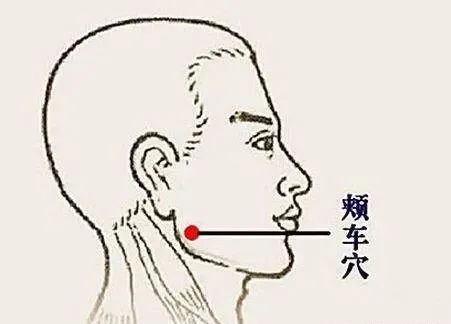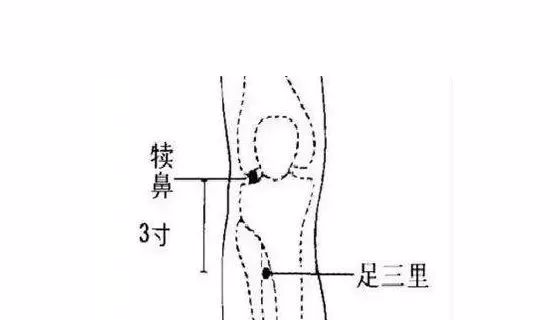
1. Common Acupuncture Points in Traditional Chinese Medicine
1. Fengchi (Wind Pool) Point: Brightens Eyes and Awakens the MindIn TCM, it is said that “Fengchi governs the head and eyes,” because Fengchi point can treat most wind-related diseases. The location of Fengchi point: located at the back of the neck, below the occipital bone, in the depression between the two large tendons, level with the earlobe. It is often used in combination with other points such as Cuanzhu (Bamboo Gathering), Taiyang (Sun), Jingming (Bright Eyes), and Sibai (Four Whites) to treat eye diseases and alleviate eye symptoms. Massaging these points, along with cervical spine correction, has a good effect on treating myopia. Additionally, massaging Fengchi point and surrounding muscles can effectively relieve cervical spondylosis, external wind-cold, internal and external wind evils causing headaches, and neck fatigue caused by prolonged head-down work. During work breaks, lightly tapping Fengchi point can help refresh the mind and eliminate fatigue.

2. Zhongwan (Middle Cavity) Point: Nourishes the StomachThe location of Zhongwan point: on the midline of the abdomen, at the midpoint of the line connecting the lower end of the sternum and the navel, pressing this point will cause a sour pain sensation. People with stomach issues can frequently press Zhongwan point. For patients with acute stomach pain, pressing Zhongwan point with fingers for 10 seconds, then releasing, and repeating this for three to five minutes can alleviate symptoms; for chronic stomach discomfort, massaging Zhongwan point with the palm can promote digestion; for patients with acute gastroenteritis, massaging Zhongwan point along with Tianshu (Heavenly Pivot) point (located 2 inches beside the navel) and Daju (Great Pivot) point (located 2 inches below the navel) can be used for treatment.

3. Guanyuan (Gate of Origin) Point: Tonifies the Kidneys and Secures the EssenceThe location of Guanyuan point: 3 inches below the navel (approximately the width of four fingers excluding the thumb). Massaging Guanyuan point can replenish kidney qi and delay aging. For men, massaging Guanyuan point can alleviate kidney deficiency, lower back pain, hair loss, and other issues. For women, massaging Guanyuan point can treat and relieve many gynecological diseases. Before massaging Guanyuan point, warm the palms and rub the center of the palm against the Guanyuan point, gradually increasing pressure until a warming sensation is felt.4. Neiguan (Inner Pass) Point: Nourishes the HeartThe location of Neiguan point: extend the arms with palms facing up, make a fist and raise the wrist, you will see two tendons in the middle of the arm, Neiguan point is located between these two tendons, about two finger widths from the wrist. Massaging Neiguan point helps to promote blood circulation, press down with the thumb vertically for about 3 minutes until a sour and numb sensation is felt. In addition to protecting the heart, Neiguan point is also an emergency point; if a patient suddenly has a heart attack, lay the patient flat and while waiting for emergency help, massaging Neiguan point can help alleviate pain. Furthermore, massaging Neiguan point can relieve headaches, dry mouth, sore throat, cervical spondylosis, shoulder periarthritis, and lower back pain.

5. Hegu (Union Valley) Point: Clears Heat and Alleviates PainHegu point, also known as the Tiger’s Mouth, is located at the highest point of the muscle between the thumb and index finger when they are brought together. Hegu point has the effect of clearing heat and relieving pain, and is very effective for diseases of the head and face. For headaches and fevers caused by wind-heat colds, or toothaches due to excessive heat, if medication does not provide immediate relief, pressing Hegu point can help alleviate symptoms, applying pressure until a sour, numb, or distended sensation is felt. If accompanied by fever, scraping the skin at the back of the neck with a porcelain spoon or pinching the surrounding skin until it turns red or purple can help expel heat toxins and reduce fever more quickly.
2. Acupuncture Points for Alleviating Dysmenorrhea
1. Pressing Guanyuan Point[Massage Principle]: Can regulate women’s physiological state, improving dysmenorrhea, diarrhea, and other symptoms.[Quick Location]: Measure 4 finger widths down from the center of the navel to find Guanyuan point.[Massage Method]: With Guanyuan as the center, use the left or right palm to massage in a clockwise and counterclockwise direction for 3-5 minutes, then press Guanyuan point for 3 minutes while breathing.

2. Pressing Sanyinjiao (Three Yin Intersection) Point[Massage Principle]: Can promote the downward flow of menstrual blood, expelling stagnant blood and reducing pain.[Quick Location]: On the inner side of the lower leg, 4 finger widths above the tip of the inner ankle is Sanyinjiao point.[Massage Method]: Use the thumb to press Sanyinjiao point 20 times, both sides can be done simultaneously.3. Pressing Diji (Earthly Pivot) Point[Massage Principle]: Has the effect of strengthening the spleen, draining dampness, and regulating menstruation, which can alleviate menstrual pain symptoms.[Quick Location]: 4 finger widths below Yinlingquan (Yin Mound Spring) point is Diji point.[Massage Method]: Use the index finger to press Diji point vertically for 1 minute, with light pressure.
3. Acupuncture Points to Enhance Male Sexual Function

1. Tianzhu (Celestial Pillar) Point (Head): Tianzhu point is located in the depression directly below the back of the neck, about 2 cm lateral to the midline of the occipital hairline. Use the thumb to massage this area.2. Zhongfu (Middle Palace) Point (Chest): Zhongfu point is located in the upper outer part of the chest, at the first intercostal space, 6 inches lateral to the midline. Zhongfu point is a major point on the lung meridian, frequent massage can smooth the lung meridian, has a breast-enhancing effect, and can also strengthen lymphatic circulation, alleviating chest tightness and shoulder and back pain.3. Qihai (Sea of Qi) Point (Abdomen): Qihai point is located in the lower abdomen, dividing the line connecting the navel and the pubic bone into ten equal parts, the point is at the 3/10 position from the navel. Massaging Qihai point has the effect of tonifying qi and assisting yang, regulating menstruation, and enhancing libido, and can assist in treating nocturnal emissions, erectile dysfunction, premature ejaculation, and spermatorrhea.4. Guanyuan (Gate of Origin) Point (Abdomen): Guanyuan point is located on the midline of the abdomen, 3 inches below the navel. It has the effect of tonifying qi, replenishing the center, warming the kidneys, and strengthening the spleen, enhancing libido, and can treat male sexual dysfunction, premature ejaculation, as well as loss of appetite and fatigue.
4. Acupuncture Points for Alleviating Tooth Pain
The first two acupuncture points are suitable for massage therapy, especially for wind-heat tooth pain, while kidney deficiency tooth pain is also effective but requires a longer treatment duration.The first acupuncture point: Jiache (Jaw Bone) Point, location: 1 inch in front of the angle of the mandible. The second acupuncture point: Xiaguan (Lower Gate) Point, location: below the zygomatic arch at the temple. For upper tooth pain: Xiaguan point; for both upper and lower tooth pain: Jiache point. These two points can be pressed or tapped with a skin needle, tapping until redness or slight bleeding occurs. Xiaguan point should also be pressed for one to two hundred times, or tapped with a skin needle.

Distal acupuncture points for treating wind-heat tooth painDistal acupuncture point 1: Hegu (Union Valley) Point for treating lower tooth pain, a special effective point, located between the first and second metacarpal bones, not in the center but closer to the midpoint of the second metacarpal; the second method of locating Hegu point: when fingers are aligned, the highest point between the thumb and index finger is the depression just below Hegu point; the third method is to open the thumb and index finger, crossing the two tiger mouths, with one thumb pointing towards the midpoint of the second metacarpal of the other hand. Hegu point is primarily used for lower tooth pain, pressing along the meridian is the main method, and moxibustion should not be used at this time.Distal acupuncture point 2: Neiting (Inner Courtyard) Point for treating upper tooth pain, located at the junction between the second and third toes, pressing along this point, but moxibustion should not be used. However, skin needles can be more effective, tapping with the small end of the skin needle until bleeding occurs.For treating upper tooth pain: methods for kidney deficiency tooth pain should combine upper and lower tooth points with kidney tonifying points.Kidney tonifying point 1: Taixi (Supreme Stream) Point, located in the depression between the high point of the inner ankle and the Achilles tendon (i.e., in the depression at the back edge of the inner ankle);Kidney tonifying point 2: Zhaohai (Shining Sea) Point, located in the depression below the inner ankle;Kidney tonifying point 3: Yongquan (Gushing Spring) Point, located in the depression at the front of the foot, at the junction of the second and third toe webs and the line connecting to the heel, the depression that appears when you forcefully bend your toes is Yongquan point.Methods for treating kidney deficiency tooth pain should combine upper and lower tooth points with kidney tonifying points.Operation methods for kidney tonifying points: pressing and pinching, and skin needle tapping, each point should be pressed for two to three minutes, then skin needle tapping should be performed, and these points should not be tapped until bleeding occurs; generally, moxibustion is not recommended for these situations.
5. Acupuncture Points for Alleviating Knee Joint Pain
Dubi (Dorsal Knee) Point is located on either side of the patellar ligament below the kneecap, the outer side is called Waixiyan (Outer Knee Eye), also known as Dubi point. This area is prone to wind, massaging this point can dispel wind, scatter cold, and invigorate blood circulation, making it very effective for treating knee joint pain. Technique: press and rub or tap this point, with pressure until a sour and distended sensation is felt, for three to five minutes. Preemptive massage can have a preventive effect.

Zusanli (Three Mile) Point is a point on the Stomach Meridian, which has a good effect on treating gastrointestinal function and also has a good therapeutic effect on knee joint pain, especially for age-related degenerative arthritis and qi-blood deficiency. The location of Zusanli point: four finger widths below the outer knee eye (3 inches) is the location of Zusanli point.Yanglingquan (Yang Mound Spring) Point is located below the lateral side of the knee joint, at the head of the fibula, just below the high point of the bone, which is also the oblique posterior of Zusanli point. Yanglingquan means “mound of water, blood, and fluids,” massaging this point can nourish our knee joints and alleviate aging. Technique: massaging or tapping Yanglingquan point is also effective.
Copyright Statement: The content and images in this article are compiled from the internet, non-commercial use, if there is any infringement, please contact the editor to delete. Please indicate the source when reprinting.
Reminder: The various prescriptions and remedies mentioned in this article are for reference and learning purposes only, and should not be used as prescriptions. Please do not use them blindly, and this platform does not bear any responsibility for any consequences arising from this!
 Every like you give, I take seriously as a sign of appreciation.
Every like you give, I take seriously as a sign of appreciation.

